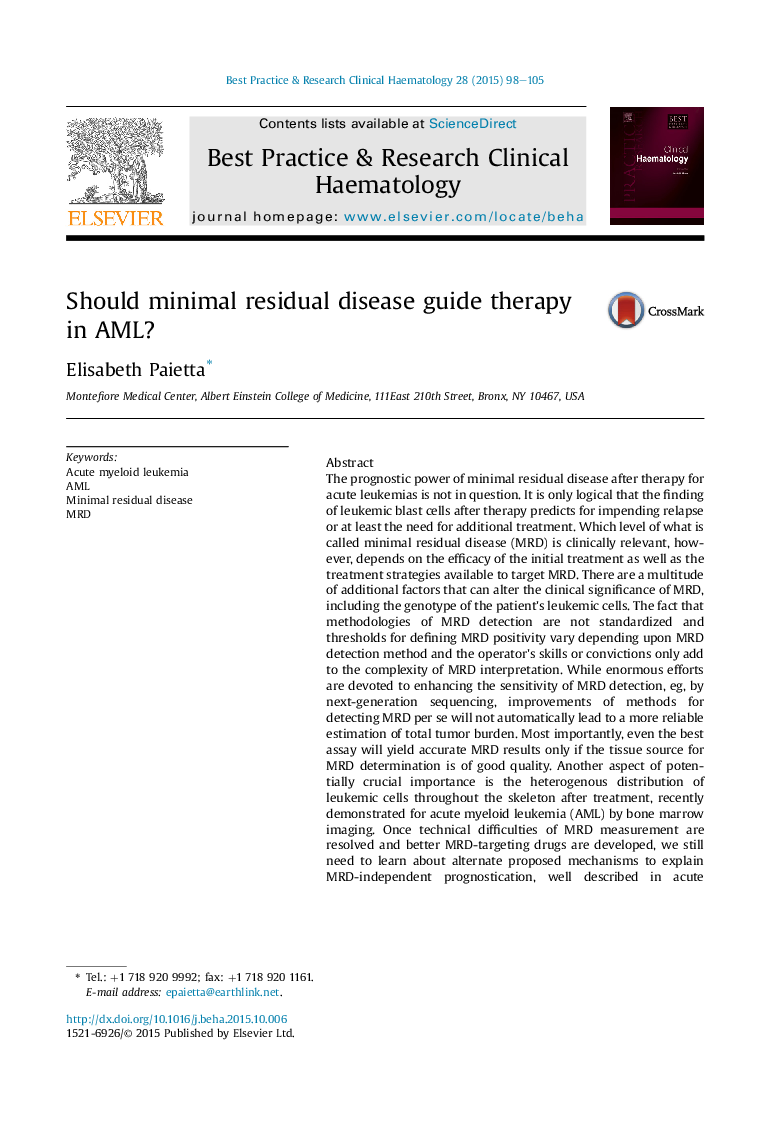| کد مقاله | کد نشریه | سال انتشار | مقاله انگلیسی | نسخه تمام متن |
|---|---|---|---|---|
| 2100647 | 1546173 | 2015 | 8 صفحه PDF | دانلود رایگان |

The prognostic power of minimal residual disease after therapy for acute leukemias is not in question. It is only logical that the finding of leukemic blast cells after therapy predicts for impending relapse or at least the need for additional treatment. Which level of what is called minimal residual disease (MRD) is clinically relevant, however, depends on the efficacy of the initial treatment as well as the treatment strategies available to target MRD. There are a multitude of additional factors that can alter the clinical significance of MRD, including the genotype of the patient's leukemic cells. The fact that methodologies of MRD detection are not standardized and thresholds for defining MRD positivity vary depending upon MRD detection method and the operator's skills or convictions only add to the complexity of MRD interpretation. While enormous efforts are devoted to enhancing the sensitivity of MRD detection, eg, by next-generation sequencing, improvements of methods for detecting MRD per se will not automatically lead to a more reliable estimation of total tumor burden. Most importantly, even the best assay will yield accurate MRD results only if the tissue source for MRD determination is of good quality. Another aspect of potentially crucial importance is the heterogenous distribution of leukemic cells throughout the skeleton after treatment, recently demonstrated for acute myeloid leukemia (AML) by bone marrow imaging. Once technical difficulties of MRD measurement are resolved and better MRD-targeting drugs are developed, we still need to learn about alternate proposed mechanisms to explain MRD-independent prognostication, well described in acute lymphoid leukemia, before MRD can be included routinely in the guidance of therapy in AML.
Journal: Best Practice & Research Clinical Haematology - Volume 28, Issues 2–3, June–September 2015, Pages 98–105